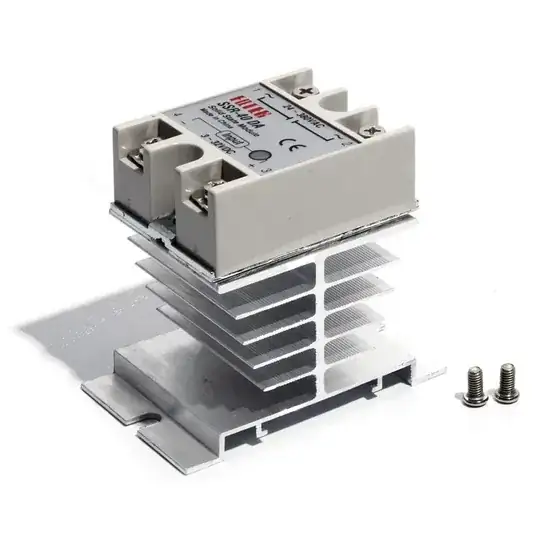A cheap SSR rated for 40A is used as a switch for 2x 4500W heating elements in parallel (around 36A). It is used in 0degC temperature with a heat sink that might not be large enough.
After 2 hours of continuous usage at 36A, the heat sink is super hot. Too hot to touch more than half a second. The SSR becomes unresponsive and cannot be controlled by the inputs anymore. It fails closed. The LED still works and shows the command properly but the relay stays closed.
24h later, it works again! Back from the dead. The SSR responds to commands and is able to control the heating elements properly (only tested for a few seconds).
How could this happen? Which component is the culprit, and why? choice between BTA41 triac, MOC3063 opto and the components shown in the picture below.
There are numerous reports of fake SSR online. This one is a "genuine" cheap chinese SSR which uses a STM BTA41 triac. Here is a picture of the internals. The triac is not shown here but it is below the top pcb.  .
.
The heat sink is external to the SSR and a thin layer of CPU thermal paste (brand new tube of Noctua NT-H1s). It looks like this:
